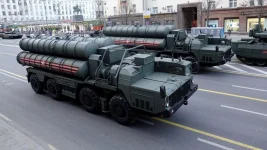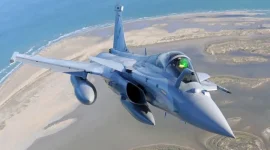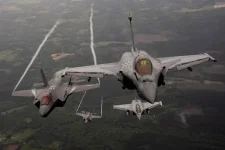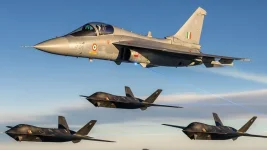- Views: 5K
- Replies: 31
The Indian Air Force (IAF) is on track to significantly enhance its combat capability by inducting three squadrons of the indigenously developed Tejas Mk1A fighter jet by the end of 2026.
This development comes as supply chain issues concerning the aircraft's American-made GE F404 engines begin to resolve, paving the way for a steady production and delivery schedule.
The first of these new units is scheduled to be established at Nal Air Force Station in Rajasthan by late 2025. A second squadron will also be raised in Rajasthan, expected to be operational by early 2026.
The strategic placement of these first two squadrons in the western sector is designed to substantially strengthen India's air defence posture along its border with Pakistan.
Each squadron is expected to operate a standard complement of 18 aircraft, comprising 16 fighter jets and two trainers.
A third Tejas Mk1A squadron is planned for induction by late 2026 at the critical Srinagar Air Base. This unit is slated to replace the IAF's existing MiG-29UPG squadron, which has been a mainstay of air defence in the northern sector for years.
Deploying the modern Tejas Mk1A to Srinagar highlights the IAF's confidence in the aircraft's ability to operate in the challenging high-altitude environment and its key role in monitoring the Line of Actual Control (LAC) with China.
The Tejas Mk1A is a more advanced version of the Light Combat Aircraft, featuring significant upgrades. It is equipped with a state-of-the-art Israeli EL/M-2052 Active Electronically Scanned Array (AESA) radar for superior target detection and an advanced electronic warfare suite for improved self-protection.
Furthermore, the aircraft is capable of firing the indigenous Astra Mk1 beyond-visual-range air-to-air missile, boosting its lethality and promoting India's self-reliance in defence technology.
The successful formation of these squadrons hinges on the manufacturing capacity of Hindustan Aeronautics Limited (HAL). The public-sector enterprise is targeting the delivery of the first Tejas Mk1A aircraft by September 2025.
While previously hampered by engine supply delays, HAL is now ramping up production at its facilities in Bengaluru and Nashik, with the goal of producing 24 jets annually to meet the IAF's operational timeline.





